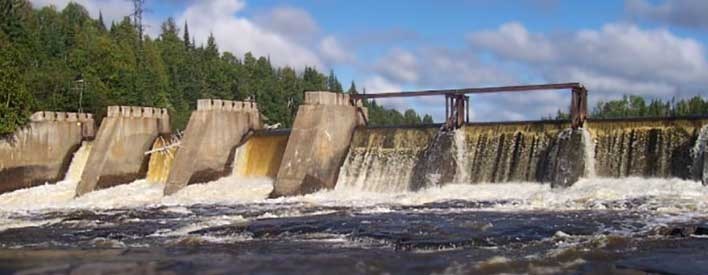THUNDER BAY — The Metis Nation of Ontario (MNO) has filed a complaint with the Ontario Ombudsman over the province's decision to repair rather than dismantle the Camp 43 dam on the Black Sturgeon River.
The Ministry of the Environment, Conservation and Parks (MECP), however, is defending the need for the repairs, saying there is a serious threat to downstream infrastructure and public safety.
It announced its decision at the end of March, after engineers determined the 60-year-old structure was at high risk of failure.
Prior to the engineering report, the Ministry of Natural Resources and Forestry had been considering the partial removal of the dam in conjunction with the construction of a multi-purpose sea lamprey barrier farther upstream.
Demolishing the dam's concrete aprons would effectively reopen the Black Sturgeon River to migrating fish, thereby rehabilitating native fish populations in Black Bay.
The MNO favours this, but numerous other stakeholders have opposed the plan on the basis that it would reopen spawning habitat for lamprey.
A committee representing the Metis Nation Lakehead/Nipigon/Michipicoten Traditional Territories complains that they were not consulted on the change in plans.
It's challenging the assertion that the dam needs urgent repairs, noting that when the east bank gave way in 1968, "there were no adverse effects" with bridges or other infrastructure.
MNO says a draft Environmental Study Report in 2016 supported the partial demolition of the dam, but the final ESR – which it says was completed in 2018 but only recently made public – had a different outcome.
"Native fisheries rehabilitation was no longer the priority but rather dam repair or replacement and lamprey control was now the OMNRF mandate," MNO said in a statement.
It's asking the Ombudsman to investigate "why a study supported by more than $1 million in research was hidden from rightsholders and stakeholders for two years after its completion."
According to MNO, the delay eliminated the opportunity for any stakeholder to appeal the final ESR .
The Ministry of the Environment, Conservation and Parks has issued a statement in response to MNO's assertions, refuting the claim that repairs to the dam are not a pressing necessity.
